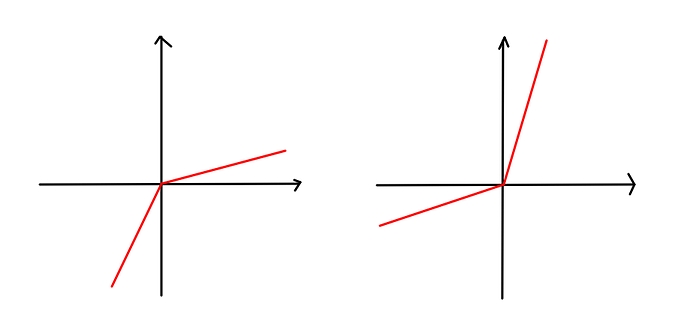agi
October 19, 2020, 3:09pm
1
Hello,
scalene(x,a,b) is abbreviation for a*pos(x)+b*neg(x) for positive a and b (documentation).
For my purposes, I need b to be negative. This leads to quasi-linear functions of these shapes:
My problem is that CVX do not recognize quasi-linearity and it report UNKNOWN curvature.
How can I model scalene(x,2,-3) as function of QUASILINEAR curvature in CVX?
To be specific, in the end I need constraints
[sum(scalene(v[i]-v[j],S[i,j],-S[j,i])) for i in [1…n])==0] for j in [1…n]]`
where S[i,j] are some positive constants.
Read section 4,2,5 “Quasiconvex optimization” of https://web.stanford.edu/~boyd/cvxbook/bv_cvxbook.pdf , and in particular, see the bisection algorithm,.
Alternatively, you can use CVXPY’s Disciplined Quasiconvex Programming https://www.cvxpy.org/tutorial/dqcp/index.html which will implement the bisection for you.
agi
October 27, 2020, 9:33am
3
Hello, thank you for reply. I read both proposed sources very carefully, but I have not found answer to my problem. I know how does the Quasi-linear convex optimalization work. My problem is that CVX does not recognize my special function to be quasi-linear.
Erling
October 27, 2020, 9:41am
4
Mark says you should use cvxpy instead of cvx if you want to do quasiconvex optimization. In other words you cannot use cvx for your problem.
agi
October 27, 2020, 10:05am
5
Ahh, I see. I am using CVXPY. And it reports UNKNOWN curvature od my quasilinear function, so I cannot run a solver, even if using qcp=True parameter.
Erling
October 27, 2020, 11:35am
6
I would ask at cvxpy on stackexchange
node.js, vue.js, webpack
